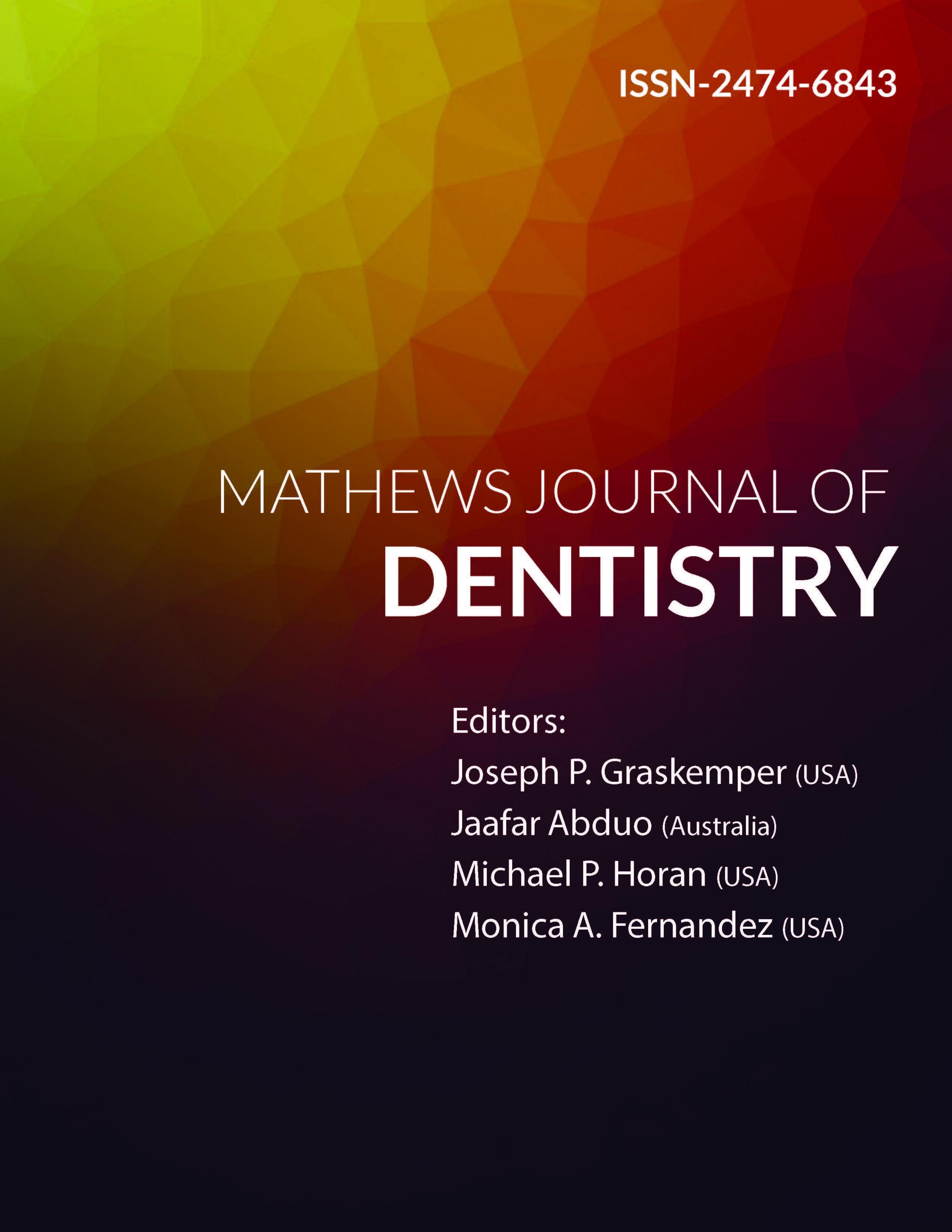
Information Links
Previous Issues Volume 8, Issue 3 - 2024
Revolutionizing Rehabilitation: Prosthodontic Management of Distal Extension Using Cobalt-Chromium Cast Partial Dentures: A Case Report
Arpit Sikri1,*, Vaishali Kalra2, Jyotsana Sikri3
1Associate Professor & Post Graduate Teacher, Department of Prosthodontics, Crown & Bridge and Oral Implantology, Bhojia Dental College & Hospital, Budh (Baddi), India
2Post Graduate (PG) Student, Department of Prosthodontics, Crown & Bridge and Oral Implantology, Bhojia Dental College & Hospital, Budh (Baddi), India
3Associate Professor & Post Graduate Teacher, Department of Conservative Dentistry & Endodontics, Bhojia Dental College & Hospital, Budh (Baddi), India
*Corresponding Author: Dr. Arpit Sikri, Associate Professor & Post Graduate Teacher, Department of Prosthodontics, Crown & Bridge and Oral Implantology, Bhojia Dental College & Hospital, Budh (Baddi), Teh. Baddi, Distt. Solan, Himachal Pradesh, India, Phone: +91-7011836989, E-mail: [email protected]
Received Date: October 10, 2024
Published Date: November 07, 2024
Citation: Sikri A, et al. (2024). Revolutionizing Rehabilitation: Prosthodontic Management of Distal Extension Using Cobalt-Chromium Cast Partial Dentures: A Case Report. Mathews J Dentistry. 8(3):54.
Copyrights: Sikri A, et al. © (2024).
ABSTRACT
The primary objective of prosthodontic rehabilitation is to restore a patient's form, function, aesthetics, and phonetics. Various treatment options are available for rehabilitating a partially edentulous arch, including removable partial dentures (RPD) or removable dental prostheses (RDP), overdentures, conventional fixed partial dentures or fixed dental prostheses (FDP), and implant-supported prostheses. Replacing a missing tooth necessitates a careful intraoral examination of the patient's current clinical condition. Additionally, it involves evaluating the associated risks, benefits, and costs of the chosen treatment option, followed by a detailed discussion with the patient. Replacing single or multiple missing teeth with removable partial dentures in distal extension scenarios presents significant challenges due to mucosal displacement caused by occlusal forces. Cast partial dentures (CPD) have recently emerged as a practical solution when fixed options are not viable, either due to the patient’s oral condition or financial constraints. The traditional laboratory procedures for fabricating CPD frameworks are complex, time-consuming, and demand high precision from the dental surgeon. However, modern digital technology has simplified these processes significantly. When edentulous areas are too extensive or numerous for fixed prostheses and cross-arch stabilization is needed, a cast partial denture (CPD) is the preferred option. The procedures for inserting, removing, and maintaining oral hygiene with a CPD are straightforward. However, designing a partial denture for distal extension cases requires considerable skill due to the variations in tooth and soft tissue, which can lead to non-axial loading. Effective management of forces relies on maintaining optimal tissue health, maximizing soft tissue coverage, using direct retainers properly, and positioning all components advantageously. In cases where cast partial dentures are not effective, flexible dentures may serve as an alternative. The present case report details the prosthetic rehabilitation of a partially edentulous patient using both maxillary and mandibular cast partial dentures (CPD) fabricated with Cobalt-Chromium. The article also aims to offer a comprehensive overview of this treatment approach through the case report.
Keywords: Bilateral Distal Extension Cases, Cast Partial Denture, Cross Arch Stabilization, Distal Extension, Financial Status, Removable Partial Denture, RPD Design, Surveying, Wax Pattern.